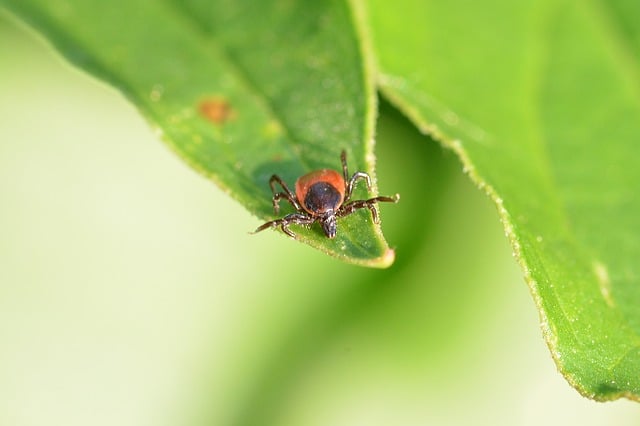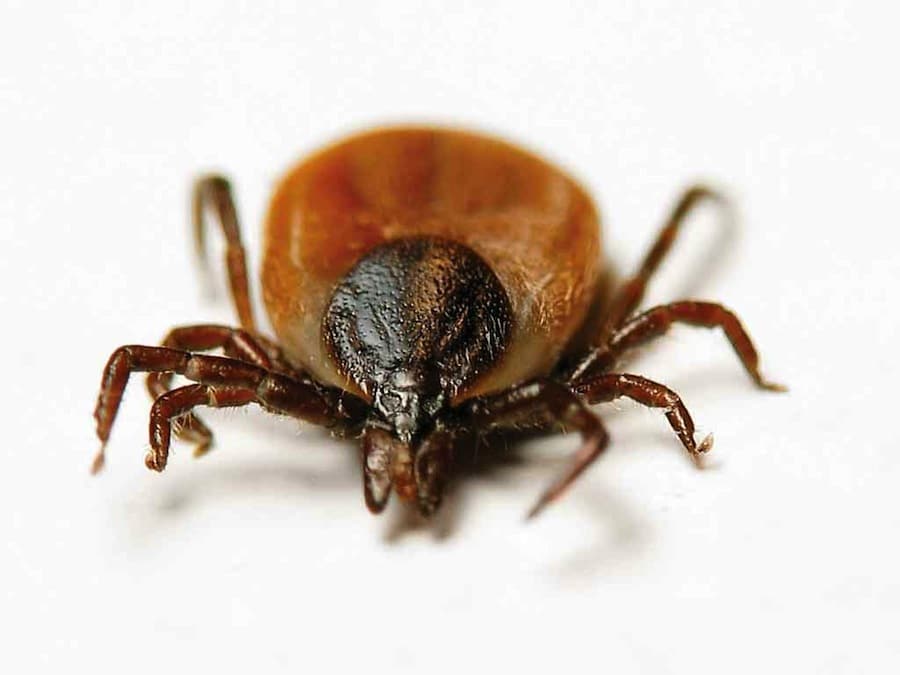Ballsy ticks goes boldly where no man has gone before.
I pulled eight ticks off my legs during a recent hike in Tennessee’s Cherokee National Forest. Every half hour, I’d checking for ticks and find one or two of the little black beasts on my shins and thighs. And every single one of them was crawling slowly north like a bunch of dirty thru-hikers starting in Georgia (my ankles) with an eye on Katahdin (my junk). I did my best to pull them off during the hike, then immediately took a shower when I got home, scanning my legs, scalp and beard for the mini-monsters. One place I didn’t check: my nethers. When it comes to ticks and my privates, I take a homophobic Republican approach: “don’t ask, don’t tell.”

Honestly, if a blood-sucking tick has taken up residence in the woolly mammoth of my “no fly zone,” I don’t want to know about it. I’d just as soon leave it, and hope my body can adjust to Rocky Mountain Spotted Fever. I’m not sure what I would do if I found one there anyway. I know I don’t have the stones to pull it off myself. What if it’s already engorged? What if there’s blood? Don’t they bury their heads beneath your skin? I don’t have the medical background to deal with that alone, and I’m certainly not going to ask my wife to get the tweezers and start digging. We’ve been together for 17 blissfully happy years, mostly because we keep a lot of secrets from each other. She has no idea that I didn’t hit puberty until my early 20s, and as far as I’m concerned, that lady has never done number two. Ever.
I’m not going to let a tiny arachnid ruin the beautiful stasis of our relationship. No sir, I’d rather let Rocky Mountain Spotted Fever take its course.
Since I’m too skittish to deal with the tick myself and too prudish to ask for help, I’m left with two options: 1) Hope the tick gets bored and moves on of its own accord. It is a tick after all; how much of an attention span can it have? 2) Be a good host to the parasite, let it feed, and deal with the consequences.
And what are the consequences of letting a tick set up shop on your body, you might ask? Good question. Apparently, humans can contract a host of diseases from a tick, most of which I can’t spell or pronounce, but the most common is lyme disease, a beautiful little infection that comes fully loaded with an expanding rash, fatigue, fever, chills, joint pain, loss of muscle tone in the face (like free botox!), heart palpitations, and disturbed sleep. If you don’t treat it, you’re looking at years of arthritis and neurological problems. Oh, but it gets better. According to the International Lyme and Associated Diseases Society (there’s a Facebook page for everything these days), lyme disease could lead to mental illness, anxiety, and aggression. They call it “lyme rage.” Some scientists are even linking a couple of recent brutal attacks to lyme rage.
And that’s just one disease that ticks are known to transmit. Ticks are more prolific than guitarist Warren Haynes, transmitting vector-born diseases like Q fever, Colorado tick fever, tularemia, Rocky Mountain spotted fever…You’re safer sharing needles with a group of junkies. All of which adds to the general mystique surrounding the tiny little arachnids. When I was a kid, there was nothing I feared in the woods more than these little specs of legs and pinchers. They were almost mythical little creatures. They could jump up to four feet! You had to burn them to kill them (like vampires)! When we’d find one gray, bloated beast on our family dog, the entire house would be quarantined and the kids would be shuffled off to the HAZMAT showers.
The litany of tyrannical acts that a simple tick can wreak on its unsuspecting host makes me wonder what ecological purpose the lowly tick serves. I understand the “six degrees of separation” that makes honey bees integral to the survival of our species and the planet in general, but the lowly tick? What beneficial role could this little monster possibly play in the overall balance of our ecosystem? Couldn’t we just eradicate the species and move on with our lives?
Leave it to Google to dash my dreams. It turns out, ticks are so effective in distributing sickness, that they often play a key role in keeping some animal populations in check by infecting them. And ecologists often study ticks as an indicator of an ecosystem’s health. Since ticks thrive on healthy animals, the more ticks an ecologist finds in a given area, the healthier that ecosystem is. Apparently, they also serve as an important link in the food chain, taking nourishment from large “host” animals and transferring that energy down to lower organisms on the chain. And certain bird species rely heavily on the tick as a food source, particularly the guinea fowl, which consumes mass quantities of the little bastards. Supposedly, two guinea fowl can clear two acres of ticks in just 12 months.
Okay, all of that makes for a good argument to not eradicate the tick, but here’s where I’m coming from on the issue: so what? Who cares about the guinea fowl? Teach them to eat couscous like city pigeons. And I’m sure hunters would love to step in and up their kill count to make up for an absence in tick-related mortality in big game animals. And you ecologists that have been using ticks as an indicator of ecosystem health: get a real job.
I’m not convinced we need the tick to uphold the balance of our ecosystem. Furthermore, what about the balance of my delicate ecosystem? It’s only a matter of time before I find a tick latched to my short and curlies. Short of a complete species eradication, my only other option is a full body wax. Not only would this give ticks no place to hide, but going completely hairless would also reduce wind drag and could significantly reduce my 5K PR. Granted, it would leave me without any natural insulation during winter, but I might be on to something here.








